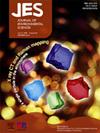农场粪便分离和高温转鼓堆肥过程中的抗生素耐药性分区
IF 5.9
2区 环境科学与生态学
Q1 ENVIRONMENTAL SCIENCES
引用次数: 0
摘要
由于抗生素、抗生素耐药菌(ARB)和抗生素耐药基因(ARGs)可能会传播到农田和邻近的自然系统,因此将粪便作为肥料施用会增加环境暴露风险。目前对特定抗生素和 ARGs 在农场管理过程中如何在不同粪便组分中产生反应的了解还很有限。这项研究的目的是进行质量流分析,确定抗生素耐药性因子(抗生素、ARGs 和 ARB)在固液分离过程中的去向,固体部分继续通过高温旋转堆肥法进入垫料回收装置 (BRU),将粪便固体用作奶牛垫料。结果表明,大部分含有抗生素耐药性因子的粪便在固液分离后未经处理,其中 95% 的粪便以液体形式离开分离器,并被泵送至储存池进行田间施用,5% 的粪便进入垫料回收装置进行处理。四环素类和土拉霉素吸附在粪便固体中,而β-内酰胺类、氨苄西林和苄青霉烷酸只存在于液体部分。在 BRU 堆肥过程中,抗生素残留物的去除率微乎其微,但有 40%-73% 的抗生素存在于液体部分。BRU 堆肥对所检测的 ARB 的去除率为 100%。在八种 ARGs(intl1、sul1、tetQ、tetX 和 tetM)中,有五种(intl1、sul1、tetQ、tetX 和 tetM)在 BRU 堆肥处理后显著减少(95%)。而其他三个 ARGs(tetW、ermB 和 bla2)在处理后保持不变。这项研究强调了从质量平衡角度研究粪肥管理和了解抗生素耐药性风险因素的重要性。本文章由计算机程序翻译,如有差异,请以英文原文为准。
Antibiotic resistance partitioning during on-farm manure separation and high temperature rotary drum composting
Manure application as fertilizer can increase environmental exposure risk, as antibiotics, antibiotic resistance bacteria (ARB), and antibiotic resistant genes (ARGs) can be transmitted to agricultural fields, and adjacent natural systems. Understanding how specific antibiotics and ARGs respond within different manure fractions during on-farm management is limited. The study objective was to conduct a mass flow analysis determining the fate of antibiotic resistance factors (antibiotics, ARGs, and ARB) through solid-liquid separation, with the solid fraction continuing through a bedding recovery unit (BRU) via high temperature rotary composting for use of the manure solids as dairy cow bedding. The results show that most of the manure mass containing the antibiotic resistance factors went untreated following solid-liquid separation, with 95 % of the mass leaving the separator as a liquid and pumped to a storage lagoon for field application and 5 % proceeding to BRU processing. The tetracyclines and tulathromycin sorbed to the manure solids, while the beta lactams, ampicillin, and benzylpenicilloic acid were only found in the liquid fraction. The removal of antibiotic residuals during the BRU composting was insignificant, yet 40 %-73 % of the antibiotics were in the liquid fraction. The BRU composting was 100 % effective in removing the ARB examined. Five of the eight ARGs (intl1, sul1, tetQ, tetX, and tetM) had significant reduction (>95 %) following the BRU composting treatment. While the three other ARGs (tetW, ermB, and bla2) remained constant despite treatment. This study highlighted the importance of examining manure management from a mass balance perspective and understanding antibiotic resistance risk factors.
求助全文
通过发布文献求助,成功后即可免费获取论文全文。
去求助
来源期刊

Journal of Environmental Sciences-china
环境科学-环境科学
CiteScore
13.70
自引率
0.00%
发文量
6354
审稿时长
2.6 months
期刊介绍:
The Journal of Environmental Sciences is an international journal started in 1989. The journal is devoted to publish original, peer-reviewed research papers on main aspects of environmental sciences, such as environmental chemistry, environmental biology, ecology, geosciences and environmental physics. Appropriate subjects include basic and applied research on atmospheric, terrestrial and aquatic environments, pollution control and abatement technology, conservation of natural resources, environmental health and toxicology. Announcements of international environmental science meetings and other recent information are also included.
 求助内容:
求助内容: 应助结果提醒方式:
应助结果提醒方式:


